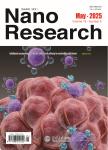版权所有:内蒙古大学图书馆 技术提供:维普资讯• 智图
内蒙古自治区呼和浩特市赛罕区大学西街235号 邮编: 010021

作者机构:State Key Laboratory of Chemical EngineeringEast China University of Science and TechnologyShanghai 200237China Shanghai Hydrogen Propulsion Technology Co.Ltd.Shanghai 201800China Shanghai Haizhiqing Energy Development Co.Ltd.Shanghai 200333China Key Laboratory of Advanced Civil Engineering Materials of Ministry of EducationFunctional Materials Research LaboratorySchool of Materials Science and EngineeringTongji UniversityShanghai 201804China School of Materials Science and EngineeringAnhui University of TechnologyMa’anshan 243002China State Key Laboratory of Physical Chemistry of Solid SurfacesDepartment of ChemistryCollege of Chemistry and Chemical EngineeringXiamen UniversityXiamen 361005China
出 版 物:《Nano Research》 (纳米研究(英文版))
年 卷 期:2023年第16卷第8期
页 面:10848-10856页
核心收录:
学科分类:081704[工学-应用化学] 07[理学] 070304[理学-物理化学(含∶化学物理)] 08[工学] 0817[工学-化学工程与技术] 0703[理学-化学]
基 金:This work was financially supported by the National Natural Science Foundation of China(No.22005097)
主 题:dipole-aligned tourmaline ferroelectric material polarization-induced electric field direction palladium adsorption energy formic acid oxidation mechanism
摘 要:Adjusting the adsorption energy of adsorbates on catalyst can directly regulate the catalytic performance and reaction pathways of heterogeneous ***,we report a novel strategy,introducing polarization-induced electric field(PIEF)with different directions,to manipulate the adsorption energy of intermediates and reaction pathway of formic acid electrooxidation on *** nanoparticles are applied as the PIEF provider,of which the direction is successfully controlled via aligning the dipoles in tourmaline in a strong external electric *** and theoretical results systematically reveal that positive PIEF leads to an electron-deficient state of Pd,reduced adsorption energy of COad,enhanced adsorption energy of*HCOOH and*OH,and promoted formate pathway of formic acid ***/TNP+/FTO,with the aid of positive PIEF,shows three-fold enhancement in the formic acid electrooxidation(4.74 mA·cm^(−2))with high durability and anti-poisoning ability compared with pristine *** study leads a new route to design formic acid electrocatalysts and provides an understanding on how to control the adsorption energy of adsorbates on electrocatalysts by an internal electric field.